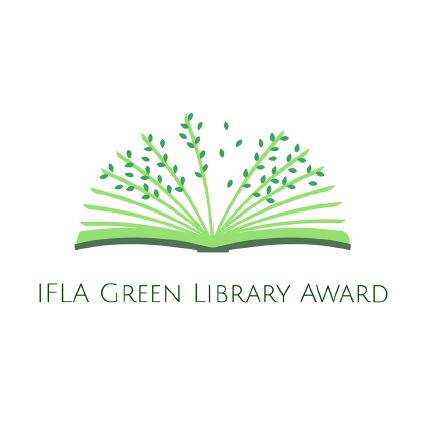IFLA Green Library Award Evaluation Criteria


IFLA Green Library Award is divided into two categories: The best Green Library and the best Green Library Project. All submissions should include the following information (not evaluated):
- Name of the library, country, and classification
- Yearly budget of the library
- Budget used for the project
- Abstract and full submission text
- Permission for publication
- Two-slide presentation (if accepted to the short list)
- Press photo with copyright credit
The prize is awarded in two categories:
Category 1: Best Green Library
A Green Library is a library that meets the requirements for green and sustainable libraries as comprehensively as possible. To be successful in this category, environmental and sustainable work should involve the whole library. The library should have worked to decrease its carbon footprint and offer green library resources and services. The work must be substantially complete or have been completed within the last 12 months, and visual or measurable results must be available. The size or budget of the library is not decisive – the focus is on the pervasiveness of the environmental work and social engagement (for example: a new library building and new, innovative library services).
Category 2: Best Green Library Project
A Green Library Project is an environmental and sustainable library project that is limited in scope, time, and budget. The project may be specific to one or more areas of library operations, but it should be significant in advancing environmental and sustainable goals, at least locally. To be successful in this category the environmental project must have been completed within the last 12 months or be ongoing, and some visual or measurable results should be available. The size of budget of the project is not decisive – the focus is on the environmental work done in the project (for example: A children’s environmental education project, or students’ zero waste project in the campus library).
A special recognition will go to a project that was carried out with minimal resources but has a big impact.
General criteria
1. Quality of the submission: How clear and complete is the submission? How well-worked is it? Does it include storytelling elements?
2. The scope of sustainability: How well does the submission pay attention to the environmental, economic, and social aspects of sustainability?
3. The significance of the environmental work done: What is the value and impact of the work done (locally, nationally or globally)? What is the over-all quality of the work? Are the results lasting?
4. Innovativeness: Is there anything new or creative in the submission locally, nationally, or globally?
5. Communication, community engagement, and marketing: How well is the environmental work communicated to a broader audience during and after the project? Has the community or target group had the opportunity to participate the environmental work?
| The Best Green Library submission is required to fulfill all (or most of) the criteria below. The Best Green Library Project submission is required to fulfill criteria from at least one of the areas below. |
Physical sustainability
6. Carbon footprint: Most of the emissions come from library buildings – have these emissions been decreased: energy efficiency, waste management, acquisitions, logistics, heating and cooling, location (including accessibility by foot, bike, public transport)?
7. Green office principles: Are green office routines in use?
Economic sustainability
8. Reduced consumption: Is consumption restrained? How?
9. New economy: Is the library’s adoption of the circular and sharing economy advanced, and has it been made accessible to the community? Does the library promote the adoption of the sharing and circular economy by offering shared spaces and devices?
Qualitative and social sustainability
10. Carbon handprint: How much can users increase their own carbon handprint by using library collections, services, shared rooms, or devices? Does the library make it easier for users to reduce their consumption? Do users have an awareness of how their library does this?
11. Green library services: Does the library offer easy access to reliable and up-to-date environmental information? Does the library provide environmental education or lead environmental information retrieval projects?
12. Social sustainability: Are good education, literacy, community engagement, cross cultural diversity, social inclusion, and overall participation evident? Does the library work actively with clients to reduce inequality?
Environmental management
13. Environmental management: Has the library set deliberate environmental goals and does it work to decrease its own negative impact on environment? Is environmental policy, commitment and the results of environmental work communicated to a broader audience?
14. Commitment to general environmental goals and programmes: Has the library committed to environmental certificates, programmes, or agreements? Does the library work fulfil the UN SDGs – if so which ones and how?
Translations:
Arabic — Chinese (Simplified, Traditional) — Farsi (Persian) — French — German — Russian — Slovenian — Spanish
More translations are welcome! Please contact petra.hauke@hu-berlin.de